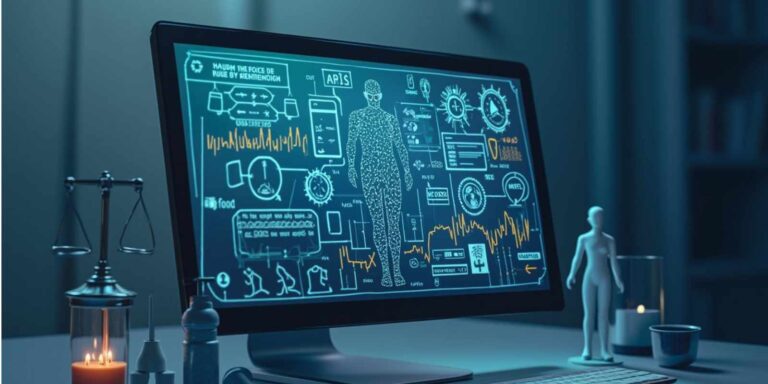In my role as a family physician and urgent care provider, I’ve witnessed firsthand the challenges facing our healthcare system. Long wait times, overcrowded emergency rooms, and rising costs often prevent people from getting timely care. Today, I’d like to explore how modern virtual care is addressing these challenges and transforming the way we deliver urgent care services.
The healthcare landscape has undergone remarkable changes since the introduction of traditional urgent care clinics. What began as an alternative to emergency rooms has evolved into something even more accessible through technological advancement. This evolution represents a fundamental shift in how we think about immediate medical care.
How Modern Virtual Care Works
Beyond simple video consultations, today’s virtual care platforms integrate sophisticated medical protocols with user-friendly technology to deliver comprehensive care. Our innovative approach streamlines the entire care process while maintaining high medical standards. Through years of development and refinement, we’ve created a system that provides:
- 24/7 access to care
- No physical waiting rooms
- Treatment from anywhere
- Lower operational costs
- High-quality medical care
Why Virtual Care Is Growing
As healthcare needs evolve and technology advances, patients increasingly seek alternatives to traditional medical visits. The growing popularity of virtual urgent care stems from several interconnected factors that reflect both healthcare system challenges and changing patient preferences. Our analysis of healthcare trends reveals key drivers:
- Rising traditional healthcare costs
- Limited access to providers
- Long wait times at clinics
- Work and family scheduling challenges
- Need for more convenient healthcare options
Can Virtual Care Replace Urgent Care?
The question of virtual care’s role in modern healthcare requires careful consideration of both its capabilities and limitations. Understanding where virtual care excels and where traditional care remains essential can help patients make informed decisions about their treatment choices.
Conditions Suitable for Virtual Treatment
Drawing from extensive clinical experience and patient outcomes data, we’ve identified numerous conditions that respond well to virtual care. These conditions share characteristics that make them particularly suitable for online diagnosis and treatment. Our platform effectively manages:
- Respiratory infections
- Urinary tract infections
- Skin conditions
- Eye infections
- Common cold and flu symptoms
- Sinus infections
When In-Person Care Is Necessary
While virtual care offers many advantages, patient safety remains our top priority. We’ve established clear guidelines for conditions that require hands-on examination or immediate medical intervention. These situations include, but are not limited to:
- Suspected broken bones
- Deep cuts requiring stitches
- Chest pain
- Severe abdominal pain
- Head injuries
- Complex medical conditions
Emergency Room Overcrowding
Emergency department overcrowding represents one of healthcare’s most pressing challenges, affecting both patient care and system efficiency. Understanding this issue and its solutions is crucial for improving healthcare delivery.
Current Challenges in Emergency Departments
Emergency departments nationwide face a complex set of interconnected problems that affect both patient care and healthcare delivery. Understanding these challenges helps explain why alternative care options have become increasingly important:
- Overcrowding with non-emergency cases
- Extended wait times
- High costs for basic care
- Staff burnout
- Limited resources for true emergencies
How Virtual Care Helps
Modern virtual care platforms offer practical solutions to many emergency department challenges. By providing appropriate care alternatives for non-emergency conditions, we can help optimize healthcare resource utilization:
- Treat non-emergency conditions efficiently
- Reduce unnecessary ER visits
- Free up resources for true emergencies
- Provide quick triage and referrals
- Offer affordable care alternatives
Speed and Cost Comparison
Understanding the real-world differences between traditional and virtual care helps patients make informed decisions about their healthcare options. When comparing key factors like time investment and cost, the distinctions become clear.
Traditional Urgent Care
Understanding the current state of traditional urgent care helps put modern alternatives in perspective. While urgent care clinics improved upon emergency room visits, they still present several challenges for patients seeking quick, affordable treatment:
- Wait time: 1-3 hours
- Cost: $150-$500 per visit
- Travel time required
- Limited operating hours
- Insurance complexity
Virtual Care Through ChatRx
Our platform represents a fundamental shift in how urgent care can be delivered. By combining medical expertise with technological efficiency, we’ve created a system that prioritizes both convenience and quality:
- Immediate access to care
- $20 flat fee per visit
- No travel needed
- 24/7 availability
- Simple, transparent pricing
Choosing the Best Care Option
Making the right choice about where to seek medical care depends on various factors, including the nature of your symptoms, time constraints, and personal preferences. Understanding your options helps ensure you receive appropriate care most efficiently.
When to Choose Virtual Care
Our experience with thousands of patient cases has helped us identify situations where virtual care provides optimal benefits. These scenarios typically involve common, well-understood conditions that can be safely evaluated and treated online:
- Known, common conditions
- Minor illnesses and infections
- Need for prescription antimicrobials
- Limited mobility or transportation
- Busy schedules
- Budget constraints
When to Visit Traditional Clinics
While virtual care excels in many situations, certain medical conditions require in-person evaluation and treatment. We’ve developed clear guidelines to help patients understand when traditional care settings are most appropriate:
- Physical injuries
- Complex medical conditions
- Required diagnostic testing
- Procedures or treatments
- Emergency situations
The Future of Urgent Care
Healthcare delivery continues to evolve as technology advances and patient needs change. Understanding these trends helps us prepare for and shape the future of medical care.
Emerging Trends
The healthcare landscape is rapidly transforming, driven by technological innovation and changing patient expectations. These developments are creating new possibilities for more efficient, accessible care delivery:
- Integration of virtual and traditional care
- Improved diagnostic capabilities
- Enhanced patient communication
- Better access to medical records
- More efficient healthcare delivery
The Role of a System Like ChatRx
As we look to the future of healthcare, our platform aims to address current challenges while preparing for tomorrow’s needs. Our approach focuses on creating sustainable solutions that benefit both patients and providers:
- Making care more accessible
- Reducing healthcare costs
- Improving efficiency
- Maintaining high-quality standards
- Putting patients first
Making Healthcare Work Better
The evolution of healthcare isn’t about replacing traditional services but rather expanding options to better serve diverse patient needs. Modern virtual care platforms represent an important step forward in making quality healthcare more accessible:
- Convenient access
- Affordable pricing
- Quality care
- Efficient service
- Better healthcare experiences
Ready to experience the future of healthcare? Join our waitlist to be among the first to access affordable, convenient care when we launch in Spring 2025.












